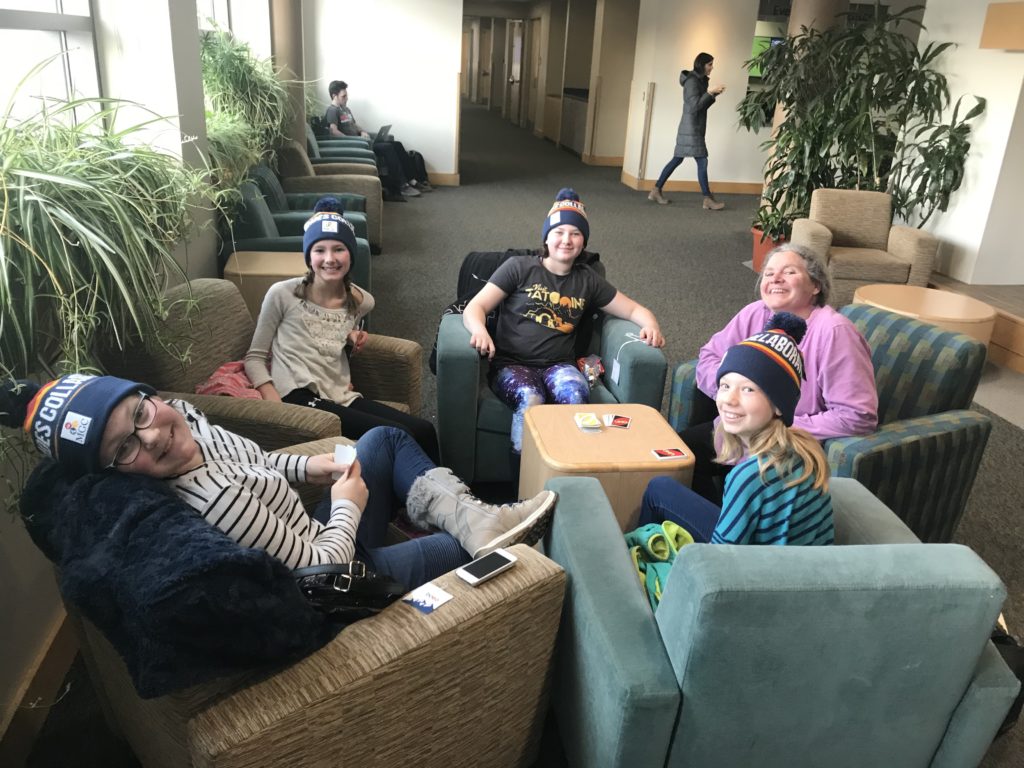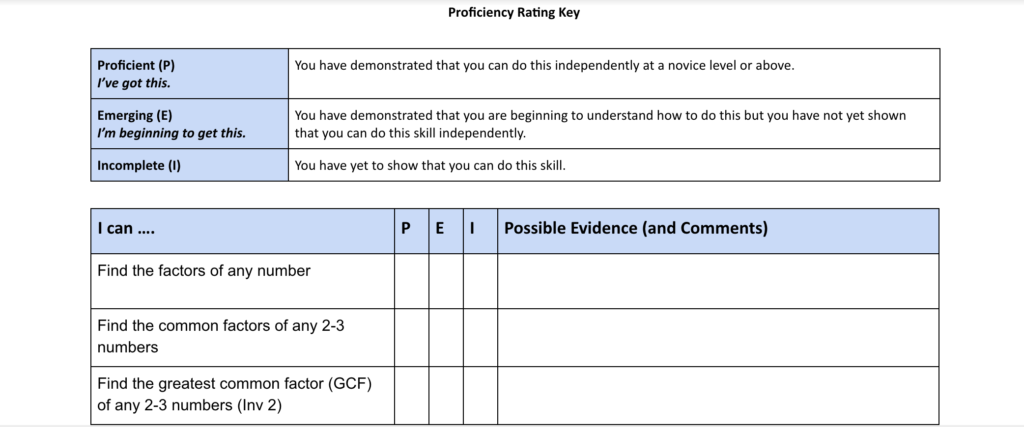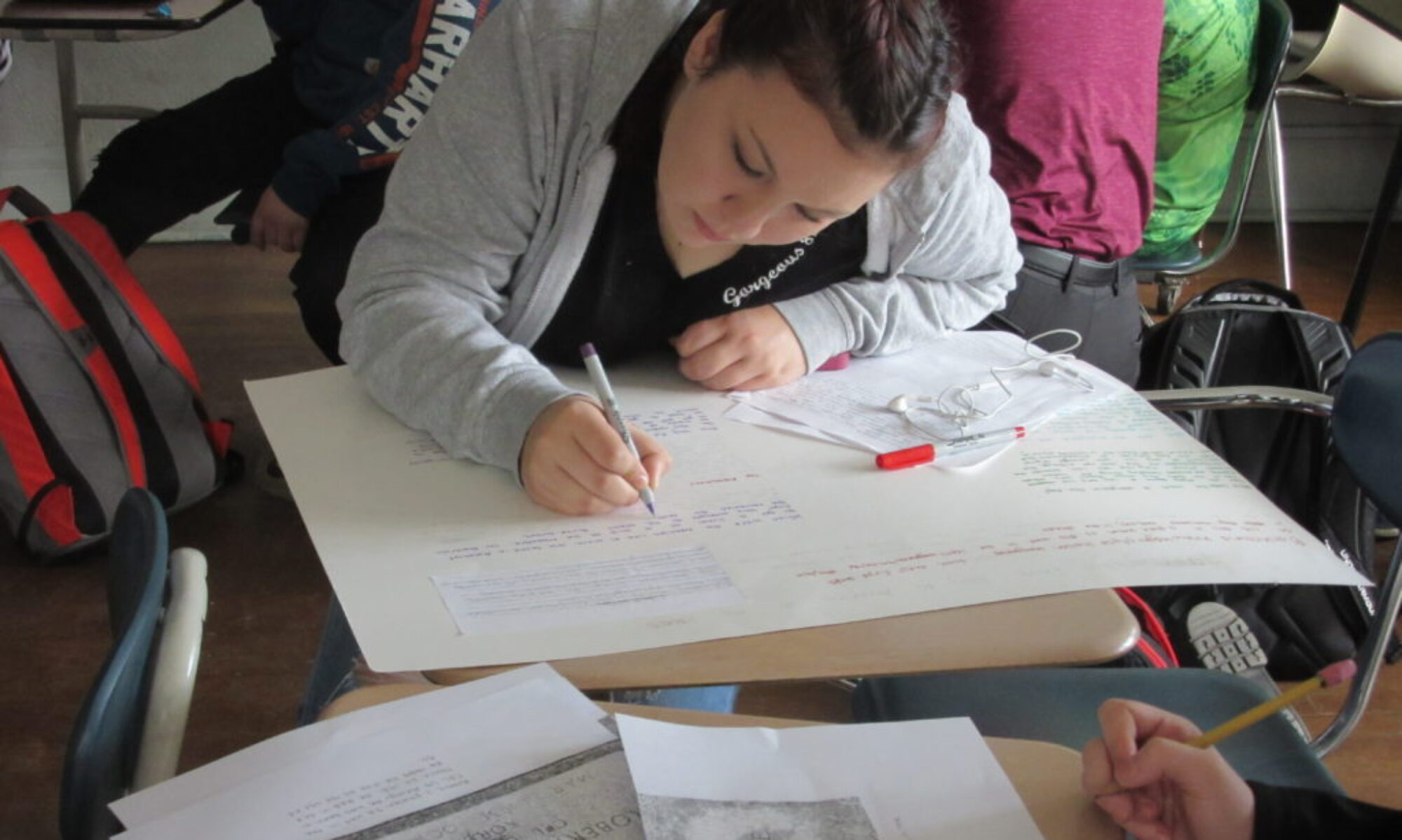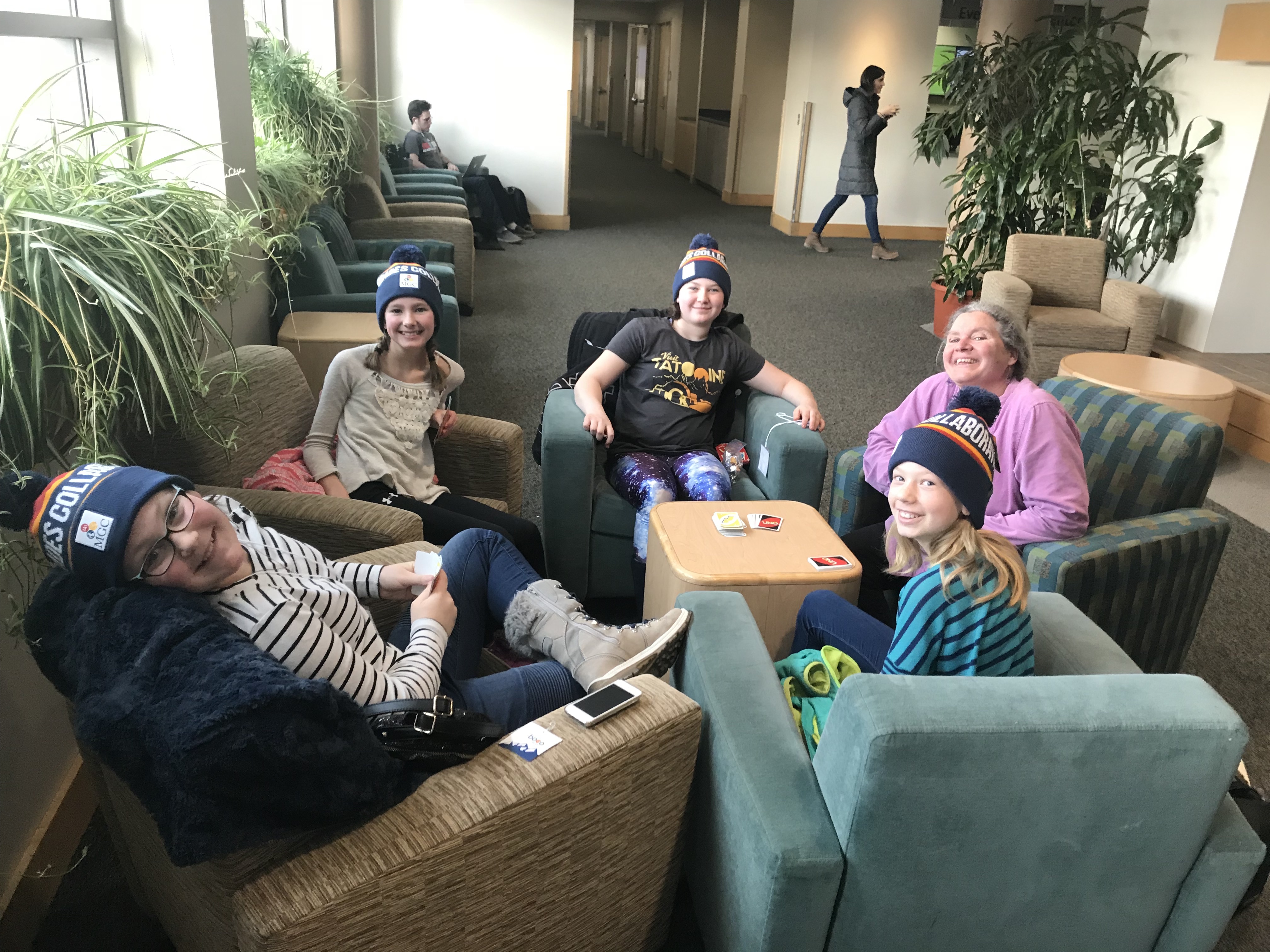Start by listening to students
 Elizabeth Tarno asked her students for feedback about their math class at the end of 5th grade. Then she did something incredible: she completely redesigned her classroom to address what students asked for.
Elizabeth Tarno asked her students for feedback about their math class at the end of 5th grade. Then she did something incredible: she completely redesigned her classroom to address what students asked for.
Elizabeth teaches both 5th and 6th grade math (and science) at the Warren Elementary School. She spent her summer working to rethink her approach through the lens of personalization.
The result? She turned her 6th grade math class into a self-paced course that came to be known as “Choose Your Own Adventure Math Class.” Students worked individually or in partners, used printed or digital materials, and took assessments only when they decided they were ready. They even created their own homework.
Elizabeth listened, she personalized, and her students responded positively. By the end of the initial experiment, Elizabeth had thoughts on how to improve this new approach. But she was clear about one thing: “I’m not going back.”
Guided by student voice
Elizabeth brought some students to the Middle Grades Conference in January 2018 to help her present her action research. She asked them to recount the type of feedback they had given her about 5th grade math. Here’s what they said:
“What I was looking for was to move on when I needed to move on and work at my own pace, so if I didn’t understand something, I could go back and do it again instead of having to go with the rest of the class.”
“I was looking for less talking and just more hands on because when Elizabeth was always talking, I’d get in trouble a lot because I was just bored and it wasn’t helping me at all.”
“I hate blah-blah days because they’re talking and talking and talking and talking. Then eventually you start spacing out, and then for the end of the blah-blah when you’re actually getting to explaining things, you’re not listening.”
“I used to think: ugh, math. I’m going to math class now.”
Let’s just pause to marvel at the courage required to ask your students to voice complaints in a public setting. In the first presentation ever delivered by this veteran teacher. Inspiring!
We’ve all received harsh feedback from students. The difference here is that Elizabeth truly listened, examined her own practice and skill set, and then boldly redesigned her classroom.
This risk-taking mindset that honors student experience is the first step toward personalized learning.

A different teacher role
When I first met Elizabeth three years ago, she described herself as a “fairly traditional teacher.” At the Middle Grades Conference she told an educator audience a different story:
My role as the teacher is to create a structure within which the kids can work. My job is to be the coach. They ask me questions. If they’re feeling stuck and they’re stuck with each other, they can turn to me. Sometimes I see that there’s an area where they need a little bit more support. I go around and I kind of look over their shoulders, listen to their questions, hand back assessments. Sometimes it’s one on one. Sometimes it’s small group. My job is to monitor progress, to make sure that they really are getting the learning that they need to be getting and to provide feedback for them so that the feedback is meaningful and that they can move forward in charge of their learning.
After the presentation, somebody in the audience asked how she keeps students motivated. Elizabeth simply smiled and nodded to her students. Even while presenting, Elizabeth’s first priority was listening.
After each student had answered, Elizabeth added:
I felt like that question was addressed to me as the teacher, but it’s not up to me really anymore, and that was the purpose really of this project. It’s to set up a system where it wasn’t about me driving them. It was about them driving themselves.
This could be the mantra of personalized learning. It’s not about me, it’s about them.
An abundance of choice
Elizabeth tried to provide as much choice as possible in the initial stages of the experiment. In many cases she adjusted these choices based on what she learned.
- Students chose between two different books from the Connected Math Project math program as their starting point. (She now has all students start with the same book so that she can support them more effectively.)
- Students chose to work alone or with a partner. (Elizabeth now asks all students to buddy up and occasionally assigns partners.)
- Students assigned themselves 20 minutes of appropriately challenging homework per night in addition to a weekly skills refresher assigned by Elizabeth. (She now provides a daily a daily homework option for students who don’t want to choose their own.)
- Students took summative assessments when they decide they are ready. In addition to verbal feedback and probing from Elizabeth, students knew how well they were doing on homework and via digital tools such as Khan Academy.
To balance this huge amount of choice, Elizabeth put in place scaffolds and supports. In addition to constant availability of direct assistance from her and a co-teacher, Elizabeth provided rubrics for each unit that spelled out the expectations for each skill.
Students documented their progress by filling out a proficiency tracker to gather their evidence and show that they were gaining the required skills and knowledge. This tracker was a key resource for preparing for student led conferences.

The overall classroom vibe was student-directed with ample support and maximum transparency. For example, Elizabeth allowed students to preview assessments to gauge their readiness:
One of the things I allow for the kids is the checkups and the quizzes, the tests. They’re always there. The kids are allowed to look at the tests, what they’re going to be assessed on ahead of time. They can look it over and they can say, “Yes, I’m ready for this,” or, “Wow, I actually haven’t done any of the problems for this. I’m going back.” Then they just hand it back to me. I put it back in the file, and when they’re ready, they come and say, “Okay. I think I’m ready to do this assessment.”
Sure, it was possible that students could game the system, but it was apparent that they would only be cheating themselves. When given trust and responsibility, students rose to the challenge.
(For another example of how to structure a self-paced math class, check out this Cult of Pedagogy post.)
Vindicated by student voice
Consider the professional fulfillment of knowing that your students felt truly listened to. At the end of the year, Elizabeth asked her 6th graders what future students should know about math class.
“It is so much fun and you will love it, but you have to be responsible with you’re math work.”“It gives freedom to kids to do math the way they want to do it.”“Cool to get to make your own decisions sometimes when it comes to your learning.”
The last laugh
In a reflective interview, Elizabeth shared her hesitation to invite students to present with her at the conference: “When I mentioned it to students, I was thinking ‘what student would want to spend a Saturday with their teacher?’. But I saw the excitement. And that got me excited to do it.”
By way of explanation, one student said, “I knew that I wanted to do it because I was hoping that one of my future teachers would be in the audience and that they would see this is how to do it because I don’t want to go back to the old format.”
Another student noted, “I was happy to spread the cure of boredom to the world.”
And another: “Inspirational! That should be the name of our textbooks. NBE. Non-boring education!”
They all broke down laughing. Elizabeth shook her head and laughed along. She was already thinking about how to tweak the system, how to make it better.
And she was, of course, listening.

Warren librarian Genevieve Knight interviewed 5th and 6th grade students about what the changes meant to them for the video above.


